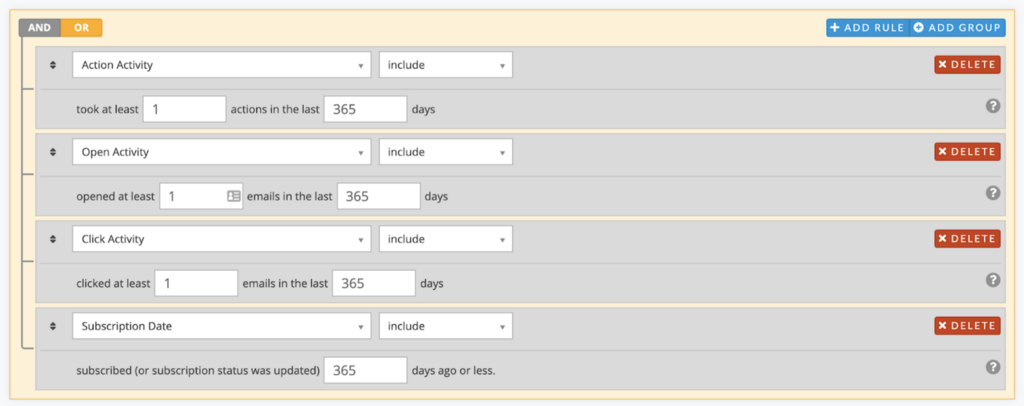 Photo by Solen Feyissa on Unsplash.
Photo by Solen Feyissa on Unsplash.
It’s official, and there’s no going back (probably). Apple will release operating system changes in September 2021 that will probably impact your metrics whether you like it or not. A significant portion (about 38%) of your recipients use one of Apple’s apps to check their email. So chances are, a portion of your community is going to be subject to these updates.
Let’s break down the changes that are coming and how you, as a digital practitioner, can prepare for it.
What’s coming?
It’s called Mail Privacy Protection on the Mail app for iOS 15, iPadOS15, and macOS Monterey. It prevents senders (you) from knowing when a recipient opens an email and masks the recipient’s IP address.

Though we don’t know for sure, it seems Apple will pre-load the email, which could show false opens. So basically, if someone uses the native Mail app on any Apple device, the email could show as an open, regardless of if they actually opened the email or not. Note that this only affects people using the native Mail app, not the Gmail, Yahoo, Outlook, or whatever other apps. But it affects everyone using the native Mail app — if they opt-in to the feature — regardless of what email service provider they use (their @gmail.com, @outlook.com, @yahoo.com, whatever).
How will users control it?
Much like the iOS 14 update, where users were asked if they want to allow apps to track, users will be prompted to opt-in to the Mail Privacy Protection feature when they open the Mail app the first time after the update. It will likely have a high adoption rate. When the iOS 14.5 update came out (the update that messed with your ads program), 87% of users selected “ask app not to track” rather than opt in to data collection. This update will likely see a similar adoption rate.
When is it coming?
Like many of Apple’s updates, this will be slowly rolled out, probably starting in September. Not everyone will receive it all at once (I see all of you who procrastinate on updating your devices), but within a couple months it should be fully out.
The Mail Privacy Protection feature will likely have a high adoption rate. When the iOS 14.5 update came out, 87% of users selected “ask app not to track” rather than opt-in to data collection.
How will this affect my opens?
Let me preface this by saying: opens are not, and have never been, a perfect metric. If you only (or mostly) rely on opens for your email metrics STOP. NOW.
Some background:
Opens are measured via an open tracking pixel. It’s a small, transparent, 1×1 pixel image that is placed in your email by yours truly (by which I mean Action Network). Images are loaded upon open (in theory), so when that image renders in the email reader, that counts as an open. Cool, huh?
But this is the important part: these open pixels are not perfect. They were not perfectly accurate last week, last month, last year, or three years ago. Microsoft Outlook, Mozilla Thunderbird, AOL, and Yahoo are configured by default to block automatic picture downloads, and Gmail loads images inconsistently.

This makes open rates equivalent to 10,000 people passing your storefront with one of those big balloon waving things, and assuming 10,000 people saw your big balloon waving thing. Emails could be opened, but not render the pixel. The pixel (or all images) could be blocked by the email client, a spam crawler, an ad blocker, or a multitude of other things. The pixel could be pre-loaded and cached by the email client. All of this means that you were already looking at an imperfect metric. Now it’s just more imperfect.
How do I evolve my program?
Focus on other metrics
With less accurate opens, you’ll need to rely on clicks and actions more in order to evaluate if your recipients are still interested in the content and want to keep receiving it. If you have a re-engagement campaign using ladders or an actives query you use for email targeting, make sure your query or decision step includes clicks, actions, and subscription date as well as opens. You may also consider increasing the amount of time someone can be inactive before receiving the re-engagement emails. Opens are still a useful metric for people not using Apple Mail, so it’s useful to keep it in your query (although with testing, this recommendation may change). And in your re-engagement campaign, ask for a low-bar action in order for people to stay on the list, like signing a form.
Here’s a sample reactivation campaign ladder on Action Network:

Adjust your baseline (when the time comes)
Your open rate and open ratios (like click/open, action/open, etc.) will likely change, so it’s going to be impossible to compare your opens in December 2021 to December 2020. Understand your current opening patterns right now. Our guess is that your open rates will be consistently off by around the same amount, or inflated by a certain percentage. Adjust your standards to monitor deliverability and testing.
Identify your active subscribers now
Depending on how this is implemented, your ‘actives’ segment (people that have opened, clicked, taken action, or subscribed in the last x number of days) will change and likely have false positives. Before September, pull a report of your actives segment, and tag them. When iOS 15 comes out, send your emails to this actives segment first, before you send to the rest of your list. This will give you a good idea of how your genuinely active subscribers have their statistics reflected versus the rest of your list.
This is an example of a 365-day actives query:

Identify and remove your inactive subscribers now
Similar to how you should identify your subscribers now, you should also remove your inactive subscribers for the same reason. Not only is this a best practice, but some of those inactives may soon be shown as actives. If you don’t have a re-engagement campaign set up, you can pull a report of your inactives (we typically recommend 180 days) and unsubscribe them.
Subject line and preview testing
Opens are generally the best indicator for which subject line your recipients found most engaging. Now, with so many false opens, your open rate is probably about to skyrocket. This doesn’t mean you should discontinue subject testing, it just means that you need to take stock of your opens and open ratios now. Our guess is that your open rates will be consistently off by around the same amount, so inflated by a certain percentage. But some real opens, from other email clients, will still be available. This likely doesn’t mean subject testing is dead, it just means you need to create new thresholds.
Monitor and improve deliverability by driving clicks
This is where it gets tricky. Since we use open rates most often to monitor for inbox placement, we need to rely on other metrics to get a sense of deliverability. This means knowing your click and action rates from different types of actions — whether it’s a petition, form, event, or fundraiser. These metrics won’t be affected, so they will still be a consistent measure.
Our recommendation is to increase your clicks with low-bar actions, like ‘sign our well-known executive director/elected official’s birthday card’ or ‘sign this petition to end the bad thing’. Even if your email program is mainly fundraising-oriented, these low-bar actions give people who can’t donate the ability to engage positively with you. Their clicks and actions send positive signals to email providers, signaling to them that the recipient wants your emails. These low-ask actions will increase your engagement, which is the key to good deliverability (as you know from my deliverability guide). Not everyone can do a high bar ask like donating, so it’s good to have an assortment of actions to keep a variety of people engaged.
Your To-Dos:

- Adjust your actives queries, list segmentation, and re-activation campaigns.
- Take stock of your opens and click/open ratios now. You can download all your email stats on the Emails tab of your Group Manage page.
- Introduce low-bar actions to boost engagement.
- Do good content, do good call-to-actions. If you aren’t in the spam business, you should be fine.
FAQs
Can I target emails to people who are using Apple Mail?
No. And targeting by domain won’t do it, because you can use any email service provider and feed that into Apple Mail.
How do I explain this to my stakeholders?
Send them this blog post! I tried to make it easy to understand :).
What if I’m using open-time content, like Movable Ink?
Talk to them. They’re the experts in how this will affect their product!
Will the images still pre-load (and therefore count as opens) for emails going to spam?
I wish I knew. Stay tuned for when this actually happens.